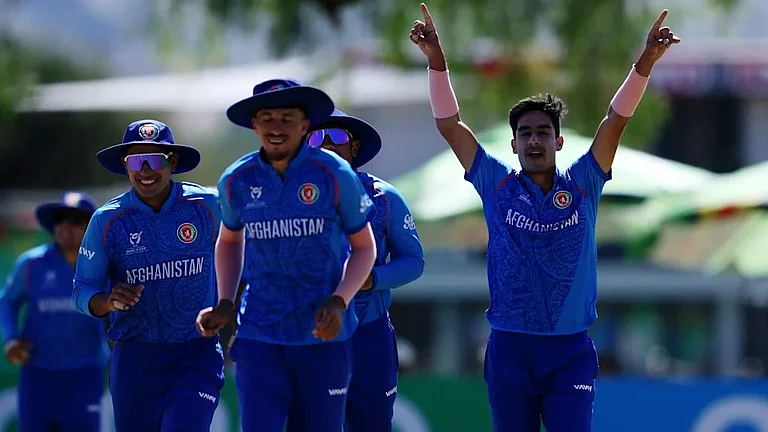The just-concluded England-New Zealand series has thrown up some very interesting takeaways that will be food for thought for cricket lovers worldwide. England have finally bounced back into Test cricket contention after a nightmare Ashes Down Under, followed by an equally disappointing West Indies tour. (More Cricket News)
Setting the tone for this series was Jonny Bairstow’s blistering hundred in the second Test, which erased a lot of painful memories and brought up one of England’s most memorable Test wins of all time. It also marked the end of England batting’s over-dependence on Joe Root.
This match was a wonderful advertisement for the longest format of the game and was probably a harbinger of things to come.
In their last 17 matches before the Lord’s Test, the England cricket team had won only once and now, with more or less the same set of players, England have suddenly won three-in-a-row, blanking the current World Test Champions New Zealand 3-0, sealing their first series win in 18 months. Although to be fair to New Zealand, the final result was not a true reflection of how closely fought the series was.
Most importantly, the positive, attacking cricket that was played throughout the series showcased a radical change in red ball mindsets and attitudes for England and perhaps for other nations as well, as Test cricket evolves into a new and exciting avatar in its 145th year.
Almost exactly a year ago against the same opponents at Lord’s, England had refused to even consider chasing a target of 273 in 75 overs and downed shutters right from the word go, closing out a dreary draw at 170 for 3, under Joe Root and Chris Silverwood. And this in the first Test match when spectators were allowed back into the stadiums after COVID.
Shifting Gears
A year later, this time ironically under two Kiwis, Ben Stokes and Brendon McCullum, England went hammer and tongs at a target of 299 on the fifth day in the second Test. In Robin Hood land at Nottingham, the ‘Merry Men’ of England, personified in intention and spirit by Johnny Bairstow, chased down the target exactly in the 50th over.
In an exhilarating run chase, the match flowed seamlessly from Test match, to one-day, to T20 cricket modes as the innings progressed. Especially after tea when Bairstow exploded to the fastest Test century in England in the last 120 years, missing the record by just 2 balls. The last 57 runs of Bairstow’s 77- ball hundred came off a mere 29 balls, as he bludgeoned the hapless Kiwis to every part of the ground to bring up his third Test century in six matches.
Bairstow was to add a fourth in the very next Test match, as he rescued England from the depths of 55 for six in the company of debutant Jamie Overton, in an astounding 241-run stand for the seventh wicket. Both played confident, attacking cricket under pressure and seized the initiative from their opponents in style. Fittingly, it was Jonny Bairstow who brought down the final curtain on this exciting series with a massive six.
Along with Ollie Pope, at last somebody other than Joe Root was also scoring runs consistently for England. And interestingly, they kept going for their shots, even in the face of a batting collapse, knocking the bowlers off their length.

The second Test particularly, was a match that will be long remembered, and a massive 1675 runs were scored over five days of pulsating cricket, which included 224 boundaries and an absolutely amazing 24 sixes, which is surely an indication of things to come. The scoring rate seldom dropped below 4 in this series in the last two Tests specially and with both sides registering big first innings totals, there still remained enough time for two full second innings to be played.
Different Strokes
Seldom, if ever, has this happened before and could represent the ‘new normal’ in Test cricket, as it transitions effortlessly from red to white ball modes, in different stages of the match, much like the Powerplay and the Death Overs in white-ball cricket, each requiring a different batting strategy and approach.
Today, the best batsmen do not hesitate to routinely play white-ball shots in Test matches, once they are set and going well. Apart from the many brutal T20 strokes that Bairstow unleashed during the course of his brilliant knocks, there was the amazing ‘reverse scoop’ that someone as technically correct as Joe Root played in the second Test, cleanly depositing Tim Southee in the stands behind third man, with an authentic, if outrageous cricketing shot.
Even more amazing was the fact that he chose to do so to the second ball that he faced on the fourth morning, en route to his quickest Test hundred ever. It was a stunning example of the influence of the white ball game on traditional Test cricket.
Joe Root repeated the shot again in the third Test, this time to Neil Wagner during a fourth innings run chase, which shows the freedom that he enjoys now, to play such shots at this level, without fear of repercussions in case it didn’t come off. Surely that was not the case, even a year ago. It also speaks volumes of the confidence that comes from scoring 10 Test centuries in the last 18 months and being elevated to the top of the pecking order amongst the ‘Fab Four’- the four best batsmen of the world.
No-Risk Cricket
Contrast that with Sir Geoffrey Boycott’s comment from some years ago, when he famously said that he never played the square-cut before lunch in a Test match, to cut down risk and it is clear how much traditional attitudes and mindsets and the game itself, has changed.

These changes have gradually infiltrated and come to be accepted as part of modern-day Test match batting, even at the most conservative and traditional Test match venues of England, long considered the cradle of cricketing tradition and orthodoxy. And fittingly, in keeping with these trends, an increasing number of ‘white ball specialists’ are now being drafted into Test sides, playing their own brand of fast, aggressive cricket.
Daryl Mitchell of New Zealand who hit a hundred in every Test match that he played in this series and scripted some of the finest rescue acts for his team in the company of his mate Tom Blundell, was a case in point. Primarily seen as a white-ball player, Mitchell would have not even made the playing XI for the first Test if Henry Nicolls had been fit, and from there, what a turnaround it has been for him and his team.
Winds Of Change
Elsewhere, Glenn Maxwell makes a comeback into the Australian Test side after seven years and Shakib Al Hasan is elevated to the Bangladesh Test captaincy, as winds of change continue to sweep across the cricketing world. Even Jonny Bairstow, the toast of all England, was until very recently, seen mainly as a white-ball player with his Test batting career largely behind him. That changed only in Australia during England’s nightmare Ashes series, after the abject failure of the frontline specialist Test batsmen.
Clearly, these portents of change that have their roots in the T20 leagues across the world, are going to keep Test cricket alive and well and establish it firmly on the path of making it the most absorbing and entertaining format of the game to watch, with something in it for every viewer.
And it is in these changes in the way the red-ball game is played at the highest level, lies the way forward and not in four-day Tests, as this riveting series has so emphatically proved.
(The author is a former first-class cricketer and a retired Wing Commander of the Indian Air Force. Views are personal)



























